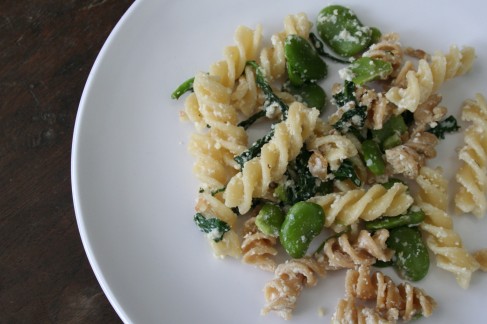
What happened is: I had a baby. Then another. Now those babies are riding bikes, reading books, and reprogramming my phone. We moved for more space, and then again because of traffic. Through it all, I kept my day job. So we get ingredients where we can. We need broccoli, spinach and lemons—that’s the grocery by my work. We want pork shoulder, that’s the fancy store near school.
Some moms work full time, attend every soccer game, and serve their family beautiful vegetables from the CSA every evening. I’m happy when we eat a meal sitting down. Maybe when the kids are through college and we retire to our farmstead, we’ll become locavores again.
But we still cook from scratch, because it turns out you have to feed children every day. And home cooking is the most reasonable way for all of us to eat good food without spending more money than we make. We don’t run a restaurant, so what we make for breakfast or dinner needs to work for grown ups, too.
When the babies were five months old, it was about creating taste blobs of pureed green beans and minced pork chop, with ingredients cribbed from the grown up dinner. It was also about having less than zero time for grocery shopping, and needing to bang out a tasty, healthy meal in fifteen minutes. A couple years hence, it was about sitting down together to eat food everyone would enjoy, such as grilled teriyaki salmon, rice, and broccoli. And making dinner in twenty minutes.
My kids were reluctant eaters, especially with new flavors and textures. It took a year of sampling dozens of foods over and over for my daughter to become less skeptical. Now at eight she enjoys everything—or “everything except eggplant,” as she says. The other is still kind of finicky about what goes in his mouth. But both will eat sushi anytime, anywhere. They devour dim sum and fried rice and pad kee mao without hot chiles, known as ‘noodle whip’ in our house. They could subsist on ramen.
A couple years ago my kids rejected that childhood staple, boxed mac ‘n cheese. (Annie’s).
“It’s just not very good,” my son said. “Ours is a lot better.”
I was proud of my mac, prouder of his palette.
They love playing in the kitchen. Over the years kitchen play has morphed into rolling out pasta dough for ravioli, making pizza from scratch, and when we have time, making an entire dinner together. My daughter learned fractions from baking banana bread. And just like it says in the parenting books, they will eat everything they cook.
The five year old, the ‘fussy’ eater, is serious about his farming and knows a ripe plum from one that’s three days too early. He grows beans and zucchini and cucumbers in our the community garden, and he eats everything he grows except tomatoes, which he gives to his sister. He was willing to try parsley this summer, because we grew it.
Of course it’s better to eat local: the ingredients are uber-fresh and harvested close to their peak, so the flavors are more sophisticated and interesting and just better. It’s just not always the reality of life with a family, a job, and a desire for basic sanity. But flexing to life as it is, rather than what you wish it was, that’s the essence of parenting. And I wouldn’t give up eating sushi with my children, anytime, anywhere, for anything in the world.








